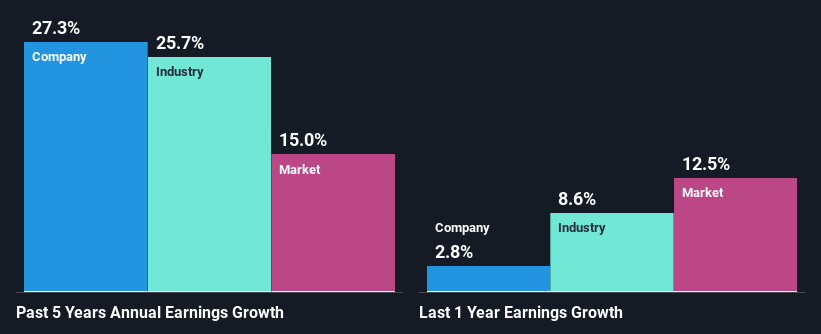With its stock down 16% over the past three months, it is easy to disregard Microsoft (NASDAQ:MSFT). However, a closer look at its sound financials might cause you to think again. Given that fundamentals usually drive long-term market outcomes, the company is worth looking at. Particularly, we will be paying attention to Microsoft’s ROE today.
Return on equity or ROE is an important factor to be considered by a shareholder because it tells them how effectively their capital is being reinvested. In short, ROE shows the profit each dollar generates with respect to its shareholder investments.
See our latest analysis for Microsoft
How Do You Calculate Return On Equity?
ROE can be calculated by using the formula:
Return on Equity = Net Profit (from continuing operations) ÷ Shareholders’ Equity
So, based on the above formula, the ROE for Microsoft is:
40% = US$70b ÷ US$174b (Based on the trailing twelve months to September 2022).
The ‘return’ is the yearly profit. One way to conceptualize this is that for each $1 of shareholders’ capital it has, the company made $0.40 in profit.
What Has ROE Got To Do With Earnings Growth?
Thus far, we have learned that ROE measures how efficiently a company is generating its profits. Depending on how much of these profits the company reinvests or “retains”, and how effectively it does so, we are then able to assess a company’s earnings growth potential. Assuming everything else remains unchanged, the higher the ROE and profit retention, the higher the growth rate of a company compared to companies that don’t necessarily bear these characteristics.
Microsoft’s Earnings Growth And 40% ROE
Firstly, we acknowledge that Microsoft has a significantly high ROE. Additionally, the company’s ROE is higher compared to the industry average of 13% which is quite remarkable. So, the substantial 27% net income growth seen by Microsoft over the past five years isn’t overly surprising.
Next, on comparing Microsoft’s net income growth with the industry, we found that the company’s reported growth is similar to the industry average growth rate of 26% in the same period.
The basis for attaching value to a company is, to a great extent, tied to its earnings growth. The investor should try to establish if the expected growth or decline in earnings, whichever the case may be, is priced in. By doing so, they will have an idea if the stock is headed into clear blue waters or if swampy waters await. Is MSFT fairly valued? This infographic on the company’s intrinsic value has everything you need to know.
Is Microsoft Making Efficient Use Of Its Profits?
Microsoft has a three-year median payout ratio of 30% (where it is retaining 70% of its income) which is not too low or not too high. So it seems that Microsoft is reinvesting efficiently in a way that it sees impressive growth in its earnings (discussed above) and pays a dividend that’s well covered.
Moreover, Microsoft is determined to keep sharing its profits with shareholders which we infer from its long history of paying a dividend for at least ten years. Our latest analyst data shows that the future payout ratio of the company is expected to drop to 22% over the next three years. Despite the lower expected payout ratio, the company’s ROE is not expected to change by much.
Conclusion
On the whole, we feel that Microsoft’s performance has been quite good. Particularly, we like that the company is reinvesting heavily into its business, and at a high rate of return. Unsurprisingly, this has led to an impressive earnings growth. Having said that, the company’s earnings growth is expected to slow down, as forecasted in the current analyst estimates. To know more about the latest analysts predictions for the company, check out this visualization of analyst forecasts for the company.
Have feedback on this article? Concerned about the content? Get in touch with us directly. Alternatively, email editorial-team (at) simplywallst.com.
This article by Simply Wall St is general in nature. We provide commentary based on historical data and analyst forecasts only using an unbiased methodology and our articles are not intended to be financial advice. It does not constitute a recommendation to buy or sell any stock, and does not take account of your objectives, or your financial situation. We aim to bring you long-term focused analysis driven by fundamental data. Note that our analysis may not factor in the latest price-sensitive company announcements or qualitative material. Simply Wall St has no position in any stocks mentioned.
Join A Paid User Research Session
You’ll receive a US$30 Amazon Gift card for 1 hour of your time while helping us build better investing tools for the individual investors like yourself. Sign up here






